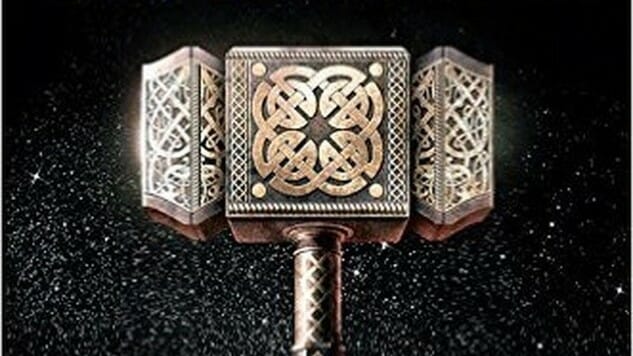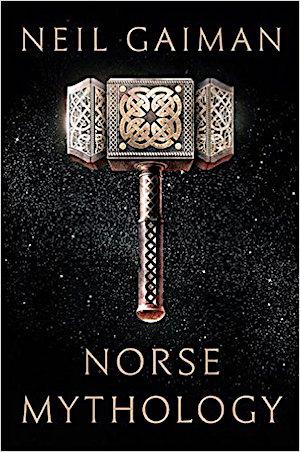
Norse myths tend to play second banana to Greek myths, but they’re everywhere—if you know where to look. From Thor’s obvious presence in the Marvel Universe to Ron Burgundy’s exclamation “Odin’s ravens!” in Anchorman, Norse mythology is a part of popular culture.
Anyone with the slightest interest in these vibrant myths will enjoy Neil Gaiman’s new book, Norse Mythology. The American Gods author has proven himself an expert in reinterpreting old tales, and this retelling maintains the stories’ original spirit and humor.
 Most Norse myths revolve around a familiar trio—Odin, Thor and Loki—and involve Loki causing trouble. As Gaiman’s Thor says, “When something goes wrong, the first thing I always think is, it is Loki’s fault. It saves a lot of time.”
Most Norse myths revolve around a familiar trio—Odin, Thor and Loki—and involve Loki causing trouble. As Gaiman’s Thor says, “When something goes wrong, the first thing I always think is, it is Loki’s fault. It saves a lot of time.”
To be fair, everyone’s a schemer in these yarns. Villains often concoct ingenious plans to capture Thor’s hammer or Freya’s hand in marriage, before getting outsmarted by the gods. These deities would have made good lawyers…except for that dummy, Thor. Unlike his blonde comic book and movie versions, this Thor is a dimwitted redhead.
Norse Mythology delivers an energetic read reminiscent of a Bible produced by Marvel Studios. There are origin stories aplenty, including the beginnings of poetry, earthquakes and even the shape of salmon. If you’re looking for a new creation myth and Genesis doesn’t do it for you, you might appreciate the idea that the universe was forged from the corpse of a giant named Ymir—a theory that’s sure to be peer-reviewed any day now.
Gaiman’s comedic tone gradually takes a dark turn in the book, hinting at weakness and decay. One of Thor’s magic goats suffers a broken leg, and it doesn’t heal properly. A character trades his sword for romance, a catastrophic decision come Ragnarok, the Norse doomsday. As Gaiman shifts the tone from adventure to tragedy, a magic world of immortality-giving apples and eight-legged horses dies with a bloodbath from hell.
The last chapter, “Ragnarok: The Final Destiny of the Gods,” reads like a Norse Book of Revelation—tragic with the promise of hope. As Heimdall, watchmen of the gods, says to Loki, “It is not the end. There is no end. It is simply the end of the old times, Loki, and the beginning of the new times. Rebirth always follows death.” As our own world feels ever closer to Ragnarok, these humorous stories about birth, life, death and rebirth could be just what we need. No matter what that damn Loki’s done, life goes on.
Mark Peters is the author of Bullshit: A Lexicon. Follow him on Twitter.